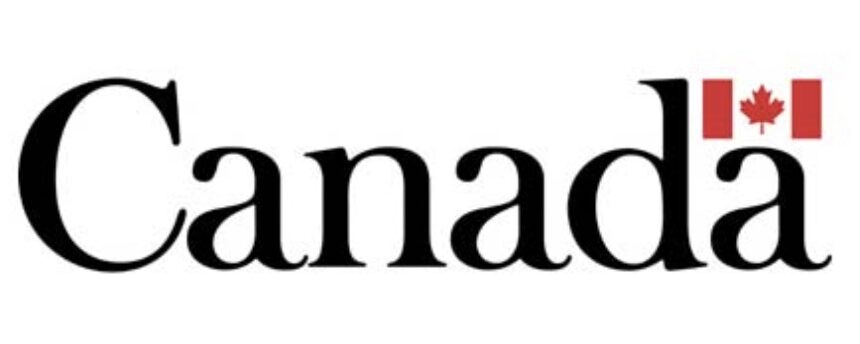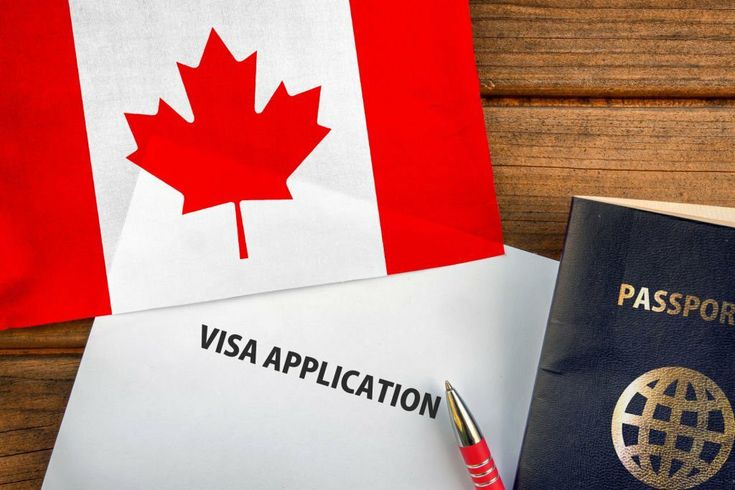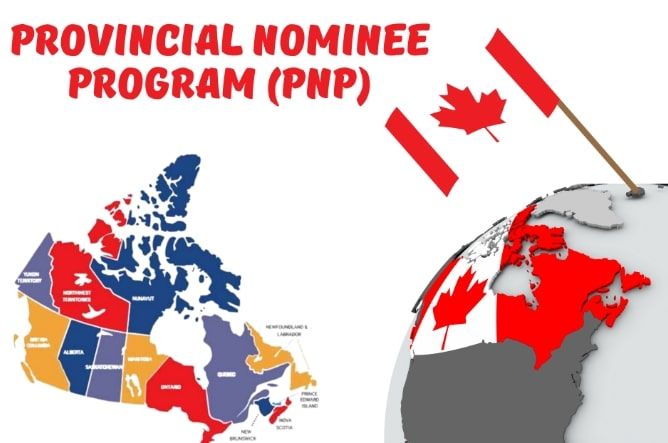How to Apply for a Canadian Work Visa Without a Job Offer
Applying for a Canadian work visa without a job offer can seem daunting, but with the right information and strategy, it’s entirely possible. This comprehensive guide will walk you through the process, providing insights and tips to maximize your chances of success. We’ll also touch on related topics that might interest you as you navigate the Canadian job market and immigration system.
Find your Eligibility for FREE!!
Understanding Canadian Work Visas
Canada is renowned for its diverse job market and welcoming immigration policies, making it an attractive destination for workers worldwide. If you’re considering working in Canada, understanding the various types of work visas is crucial. This comprehensive guide will delve into the most common types of Canadian work visas, their requirements, and benefits. We’ll also explore related job opportunities and resources to help you navigate the Canadian job market effectively.
Types of Canadian Work Visas
1. Temporary Foreign Worker Program (TFWP)
The Temporary Foreign Worker Program (TFWP) is designed to help employers in Canada hire foreign workers to fill temporary labor and skill shortages. This program requires employers to obtain a Labour Market Impact Assessment (LMIA) from Employment and Social Development Canada (ESDC). The LMIA confirms that there is a need for a foreign worker to fill the job and that no Canadian workers are available to do it.
- Requirements: Employers must demonstrate that hiring a foreign worker will have a positive or neutral effect on the Canadian labor market.
- Benefits: Allows foreign workers to gain valuable Canadian work experience, which can lead to permanent residency.
2. International Mobility Program (IMP)
The International Mobility Program (IMP) allows employers to hire foreign workers without the need for an LMIA. This program is designed to advance Canada’s broad economic and cultural interests. Examples of streams under the IMP include:
-
CUSMA (formerly NAFTA) Work Permits: For citizens of the United States and Mexico.
-
Intra-Company Transfers: For workers transferring within a company with locations in Canada and abroad.
-
CETA Work Permits: For citizens of European Union member countries.
-
Requirements: Vary depending on the specific stream, but generally include a job offer from a Canadian employer and meeting the eligibility criteria for the stream.
-
Benefits: Faster processing times compared to the TFWP and more flexibility for employers and workers.
3. Open Work Permit
An Open Work Permit allows you to work for any employer in Canada. This type of permit is particularly useful if you don’t have a job offer, as it provides the flexibility to explore different job opportunities. Open Work Permits are available through various programs, including:
-
Post-Graduation Work Permit Program: For international students who have completed a program of study at a designated learning institution in Canada.
-
Spousal/Common-Law Partner Sponsorship: For spouses or common-law partners of Canadian citizens or permanent residents.
-
Working Holiday Visa: For young people from participating countries who want to travel and work in Canada.
-
Requirements: Vary depending on the program, but generally include meeting eligibility criteria and providing necessary documentation.
-
Benefits: Offers flexibility to change jobs and employers, and can lead to permanent residency through programs like the Canadian Experience Class (CEC).
Steps to Apply for a Canadian Work Visa Without a Job Offer
Applying for a Canadian work visa without a job offer can be a strategic move for those looking to explore the diverse job market in Canada. By following the right steps and understanding the eligibility criteria, you can maximize your chances of success. This detailed guide will walk you through the essential steps to apply for a Canadian work visa without a job offer, while also incorporating relevant job opportunities and resources to enhance your application.
Step 1: Determine Your Eligibility
Before diving into the application process, it’s crucial to ensure you meet the basic eligibility criteria for a Canadian work visa. These criteria are designed to assess your ability to contribute to the Canadian economy and integrate into society.
Age
- Requirement: You must be at least 18 years old to apply for a work visa.
- Tip: While there is no maximum age limit, younger applicants may have an advantage in the points-based system due to their potential for longer-term contributions to the workforce.
Education
- Requirement: A high school diploma or higher education is often required.
- Tip: Pursuing higher education or additional certifications can significantly boost your Comprehensive Ranking System (CRS) score in the Express Entry pool. Consider exploring educational opportunities that align with in-demand skills in Canada.
Language Skills
- Requirement: Proficiency in English or French is essential. You will need to take a language test, such as IELTS or TEF, to demonstrate your proficiency.
- Tip: Aim for high scores in your language tests, as this can greatly enhance your CRS score. Consider taking language courses or practicing with native speakers to improve your skills.
Health and Security
- Requirement: You must be in good health and have a clean criminal record. A medical examination by a panel physician and a police clearance certificate may be required.
- Tip: Ensure you have all necessary medical and security documents ready before applying, as these can take time to process.
Step 2: Choose the Right Program
Canada offers several immigration programs that allow you to apply for a work visa without a job offer. One of the most popular and flexible pathways is the Express Entry system.
Express Entry
Express Entry is an online system used to manage applications for permanent residence under three economic immigration programs:
-
Federal Skilled Worker Program (FSWP)
- Eligibility: This program is for skilled workers with foreign work experience who want to immigrate to Canada permanently.
- Benefits: Offers a pathway to permanent residency for professionals with skills and experience in high-demand occupations.
-
Federal Skilled Trades Program (FSTP)
- Eligibility: This program is for skilled tradespeople with experience in specific trades who want to become permanent residents.
- Benefits: Ideal for those with experience in trades like construction, manufacturing, or agriculture. Explore opportunities like factory jobs in Canada for potential visa sponsorship.
-
Canadian Experience Class (CEC)
- Eligibility: This program is for skilled workers who have Canadian work experience and want to become permanent residents.
- Benefits: Suitable for those who have already gained work experience in Canada, such as through a previous work permit or student visa.
Provincial Nominee Program (PNP)
Each province and territory in Canada has its own immigration program, known as the Provincial Nominee Program (PNP). These programs target specific occupations and skills needed in the province. If you receive a nomination from a province, you can apply for permanent residence.
Step 3: Gathering Necessary Documents for a Canadian Work Visa Application
Applying for a Canadian work visa involves meticulous preparation and gathering a comprehensive set of documents. Ensuring that you have all the necessary paperwork can significantly streamline your application process and enhance your chances of success. This guide will walk you through the essential documents you need to prepare and provide tips to maximize your Comprehensive Ranking System (CRS) score if you’re applying through Express Entry.
Essential Documents for Your Canadian Work Visa Application
1. Passport
- Requirement: A valid passport is the foundational document for your visa application. Ensure that your passport is valid for the duration of your intended stay in Canada.
- Tip: If your passport is nearing its expiration date, consider renewing it before starting your application process to avoid delays.
2. Educational Credentials
- Requirement: You will need to provide proof of your educational qualifications, such as diplomas, degrees, and transcripts. These documents should be translated into English or French if they are in another language.
- Tip: Consider having your educational credentials assessed by a designated organization to determine their Canadian equivalency. This can boost your CRS score in the Express Entry pool.
3. Language Test Results
- Requirement: Proficiency in English or French is crucial for your visa application. You will need to take a language test, such as IELTS for English or TEF for French, and submit your results.
- Tip: Aim for high scores in your language tests, as this can significantly enhance your CRS score. Consider taking language courses or practicing with native speakers to improve your skills.
4. Proof of Funds
- Requirement: You must demonstrate that you have sufficient funds to support yourself and any dependents during your stay in Canada. This can include bank statements, investment accounts, or other financial documents.
- Tip: Ensure that your proof of funds is up-to-date and accurately reflects your financial situation. Consider exploring resources on affordable temporary housing options to manage your expenses effectively.
5. Medical Examination Results
- Requirement: A medical examination by a panel physician approved by Immigration, Refugees and Citizenship Canada (IRCC) is mandatory. The examination ensures that you do not have any medical conditions that could pose a risk to public health or safety.
- Tip: Schedule your medical examination well in advance, as it can take time to receive the results. Ensure that you bring all necessary documents, including your passport and any relevant medical history.
6. Police Clearance Certificates
- Requirement: You must provide police clearance certificates from your country of residence and any country where you have spent six months or more since the age of 18. These certificates confirm that you have a clean criminal record.
- Tip: Request your police clearance certificates early in the application process, as processing times can vary. Ensure that the certificates are translated into English or French if necessary.
Step 4: Creating an Express Entry Profile
If you’re applying through Express Entry, creating a comprehensive and accurate online profile is crucial. Your profile will be ranked based on the Comprehensive Ranking System (CRS), which considers factors like age, education, work experience, and language skills.
Tips for Maximizing Your CRS Score
- Accuracy: Ensure that all information in your profile is accurate and up-to-date. Inaccuracies can lead to delays or even rejection of your application.
- Completeness: Provide as much relevant information as possible, including details about your work experience, education, and language skills.
- Continuous Improvement: Look for ways to improve your CRS score, such as gaining more work experience, pursuing higher education, or improving your language skills. Explore resources like improving your chances of getting hired in Canada for additional strategies.
Improving Your CRS Score for a Canadian Work Visa Application
Receiving an Invitation to Apply (ITA) for permanent residence in Canada is a significant milestone in your immigration journey. A higher Comprehensive Ranking System (CRS) score increases your chances of receiving an ITA. This guide will provide detailed strategies to improve your CRS score and enhance your application’s competitiveness. Additionally, we’ll explore how to apply for a work permit and the benefits of an open work permit.
Strategies to Improve Your CRS Score
1. Language Proficiency
- Requirement: Proficiency in English or French is a crucial factor in your CRS score. You will need to take a language test, such as IELTS for English or TEF for French, and submit your results.
- Tip: Aim for high scores in your language tests, as this can significantly boost your CRS score. Consider enrolling in language courses or practicing with native speakers to enhance your skills. Higher proficiency can open doors to various job opportunities, such as dog training jobs in Canada, where communication is key.
2. Education
- Requirement: Pursuing higher education or additional certifications can greatly enhance your CRS score. Ensure that your educational credentials are assessed by a designated organization to determine their Canadian equivalency.
- Tip: Consider enrolling in courses or programs that align with in-demand skills in Canada. This can make you more competitive in the job market and increase your CRS score. Explore opportunities like high-paying warehouse worker jobs in Canada that may require specific certifications.
3. Work Experience
- Requirement: Gaining more relevant work experience can improve your CRS score. Ensure that your work experience is well-documented and aligns with the occupations in demand in Canada.
- Tip: Look for opportunities to gain Canadian work experience, as this can significantly boost your CRS score. Consider roles like fruit picker jobs in Canada that offer visa sponsorship and valuable work experience.
4. Job Offer
- Requirement: While not required, a job offer from a Canadian employer can significantly boost your CRS score. A valid job offer can provide up to 200 additional points, depending on the skill level of the job.
- Tip: Actively search for job opportunities in Canada that align with your skills and interests. Networking, attending job fairs, and leveraging online job portals can increase your chances of securing a job offer. Explore resources like dog walker jobs with visa sponsorship for potential employment opportunities.
Applying for a Work Permit
If you receive an ITA, the next step is to apply for a work permit. An open work permit is particularly advantageous, as it allows you to work for any employer in Canada. This flexibility can be invaluable as you explore different job opportunities and settle into Canadian life.
Benefits of an Open Work Permit
- Flexibility: An open work permit allows you to change jobs and employers without the need for a new work permit. This can be particularly useful if you’re exploring different career paths or industries.
- Job Exploration: With an open work permit, you can gain a diverse range of work experiences, which can enhance your resume and make you more competitive in the job market.
- Pathway to Permanent Residence: An open work permit can be a stepping stone to permanent residency through programs like the Canadian Experience Class (CEC).
Tips for Applying for a Work Permit
- Accuracy: Ensure that all information in your work permit application is accurate and up-to-date. Inaccuracies can lead to delays or rejection of your application.
- Completeness: Provide all required documents, including your passport, educational credentials, language test results, and proof of funds.
- Timeliness: Apply for your work permit as soon as you receive your ITA to avoid delays in your immigration process.
Improving your CRS score is essential for increasing your chances of receiving an ITA for permanent residence in Canada. By focusing on language proficiency, education, work experience, and securing a job offer, you can significantly enhance your score. Applying for a work permit, particularly an open work permit, provides the flexibility to explore different job opportunities and settle into Canadian life.
Exploring Job Opportunities in Canada
While you don’t need a job offer to apply for a work visa, having one can greatly enhance your application. Here are some job opportunities and resources to consider:
- Pet Care Jobs: If you love animals, consider pet care jobs in Canada. These roles can be rewarding and offer a unique way to integrate into Canadian society.
- Dog Training Jobs: For those with a passion for training animals, dog training jobs in Canada offer a niche opportunity with competitive salaries.
- Fruit Picker Jobs: Seasonal work like fruit picking can provide a steady income and the chance to explore Canada’s rural areas
Conclusion
Applying for a Canadian work visa without a job offer is a multi-step process that requires careful planning and preparation. By understanding the different programs, improving your CRS score, and exploring job opportunities, you can increase your chances of success. Whether you’re interested in pet care, fruit picking, or warehouse work, Canada offers a wealth of opportunities for immigrants.







